Carnegie Mellon Students and Faculty Use AI to Help Transplant Centers Improve Patient Education Resources
By Jennifer Monahan
When a patient has an organ transplant, clear, accessible information can make all the difference. That’s why Transplants.org turned to Heinz College Trustees Professor of Management Science and Healthcare Informatics Rema Padman, a health care analytics and informatics expert, and a team of Heinz College graduate students to analyze patient education materials from transplant centers across the U.S.
The project is personal for Tristan Mace, founder and executive chair of Transplants.org. At 31, Mace abruptly went into quadruple organ failure and underwent an emergency heart transplant. The experience inspired him to create the non-profit Transplants.org.
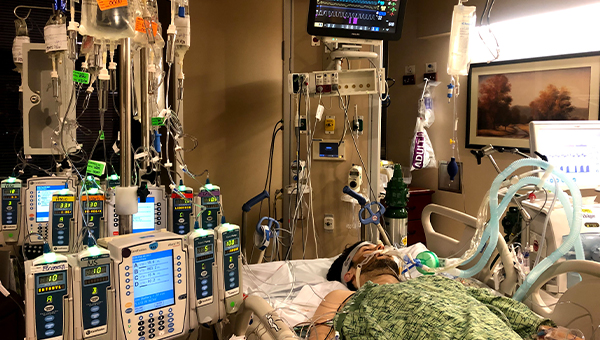
Tristan Mace in ICU on ventilator while waiting to be listed for his heart transplant (February 20, 2021).
Photo courtesy of Jordan Mace.
With the mission of improving outcomes and access for transplant patients, Mace and Padman evaluated a variety of topics that were important to patients. Transplants.org identified the transplant patient handbook as one critical aspect of care that could potentially be improved to meet the evolving needs of patients.
The Transplant Bible
Organ transplant candidates and recipients typically receive a printed binder of information from the care team at their transplant centers.
The quality, depth, and breadth of information provided can vary significantly among centers – even within the same transplant center, depending on which organ a patient has had transplanted.
Physicians consider the handbook a safety net for navigating day-to-day life before and after surgery; patients sometimes call it “the transplant Bible.”
“We wanted to look at the similarities and differences in handbook information across transplant centers to see how we could improve what is oftentimes insufficient or inconsistent guidance across important topics for patients,” Mace said.
Those topics range from surgery risks and the waitlist process to immunosuppression medications, lifestyle, travel, finances, reproductive health, and support resources.
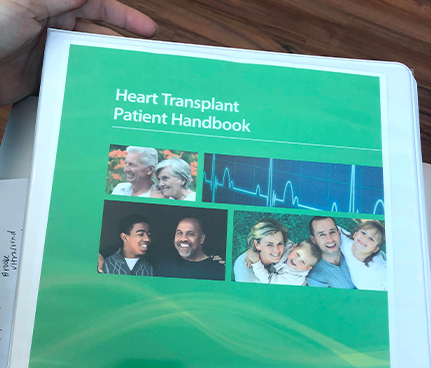
Jordan Mace reviews the binder to list Tristan for a Heart Transplant.
Photo courtesy of Jordan Mace.
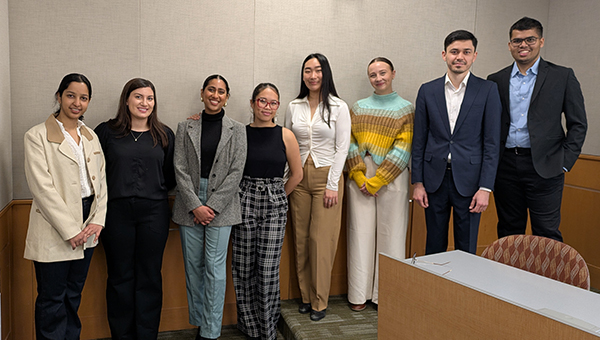
Student Capstone Team (left to right): Aashna Anand Shetty (MISM '24), Sara Clemente (MSHCA '25), Sharon John (MSHCA '25), Yoko (Jewel) Kentilitisca (MSHCA '25), Jaimie An (MSPPM '25), Julia Duken (MSPPM '25), Abdulaziz Abdulakhadov (MSPPM-DA '25), Rahul Pujari (MISM '24)
Mace partnered with Padman and the Heinz College student team on a semester-long capstone project to produce an in-depth comparative analysis of patient materials across U.S. organ transplant centers. The result, powered by natural language processing and generative artificial intelligence methods to produce models with data-driven evidence, demonstrates the current state of organ transplant patient educational materials in the U.S., highlighting the challenges in maintaining consistency, completeness, and currency of the content. By building awareness of the discrepancies in the content for a complex patient population, this effort is anticipated to inform and influence transplant centers in the development of future patient education handbooks that best serve transplant recipients everywhere.
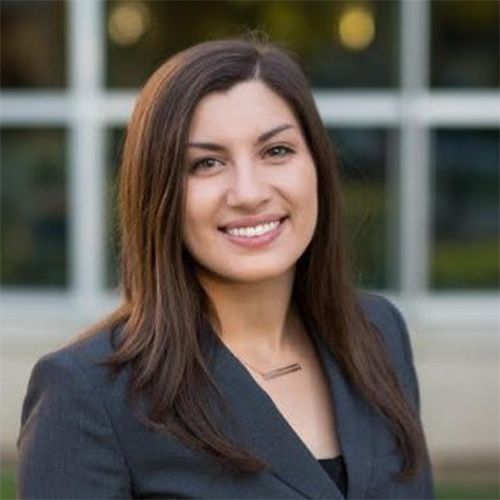 “This project provides a way for transplant centers to compare their patient education materials to a baseline, to identify where their content aligns – or doesn’t – with other health systems,” Clemente said. “They haven’t had this information before, so it gives them the benchmark they were looking for.”
“This project provides a way for transplant centers to compare their patient education materials to a baseline, to identify where their content aligns – or doesn’t – with other health systems,” Clemente said. “They haven’t had this information before, so it gives them the benchmark they were looking for.” Padman, who advised the student team throughout the project, emphasized the significance of this kind of applied learning.
This was an opportunity for students to engage deeply with a real-world health care challenge using cutting-edge AI and analytics methods. Their work not only supports better outcomes for patients and health systems, but also showcases how technology, analytics, and policy can be aligned in the service of public good of great societal value.Professor Rema Padman
“This was an opportunity for students to engage deeply with a real-world health care challenge using cutting-edge AI and analytics methods,” Padman said. “Their work not only supports better outcomes for patients and health systems, but also showcases how technology, analytics, and policy can be aligned in the service of public good of great societal value.”
The benchmarking initiative was strengthened by participation from many of the nation’s leading transplant centers, including Mayo Clinic, Vanderbilt Health, UCLA Health, UCSF Health, Johns Hopkins Medicine, Duke Health, University of Pittsburgh Medical Center, Massachusetts General Hospital, and others.
“We’ve been told this is the largest patient educational analysis in the history of U.S. transplantation,” Mace said.
Conquering the Technical Challenges
The handbooks ranged from a few pages to a few hundred pages each. The students were tasked with analyzing thousands of pages of material.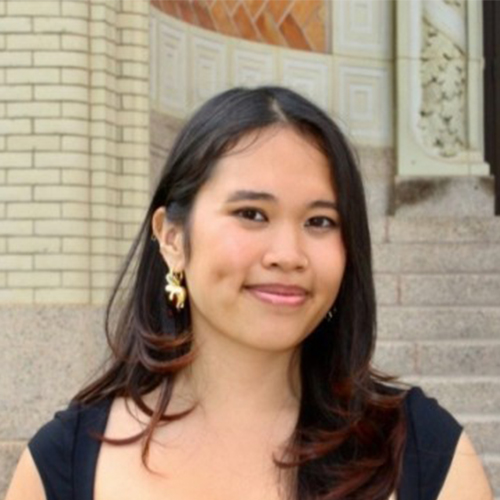 “Sometimes it was a PDF document with a hundred pages, or sometimes it was a 20-slide PowerPoint deck,” Kentilitisca explained. “There were really big variations when it came to the documents.”
“Sometimes it was a PDF document with a hundred pages, or sometimes it was a 20-slide PowerPoint deck,” Kentilitisca explained. “There were really big variations when it came to the documents.”
One major challenge was figuring out how to account for images and tables included in the materials. Crucial information such as whether a kidney transplant patient can take over-the-counter medications might include images of popular brands. The students’ model had to be able to incorporate the information contained in the image in a way that a large language model (LLM) could read.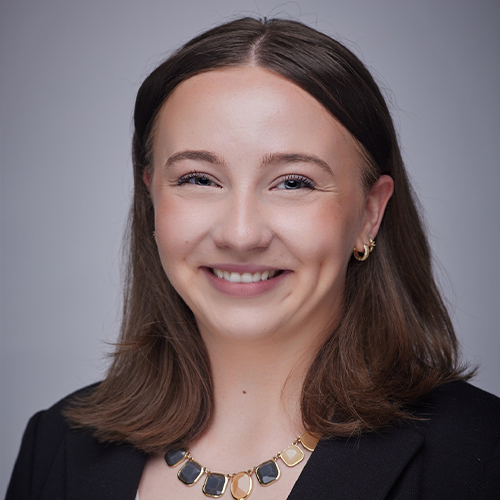 “Another key concern for us was the variation in how similar information was phrased—for example, one source might say, ‘Meet with a financial counselor,’ while another used slightly different wording,” Duken said. “Grouping these variations into meaningful categories for visualization proved challenging, but it was essential for providing stakeholders with clear, actionable insights.”
“Another key concern for us was the variation in how similar information was phrased—for example, one source might say, ‘Meet with a financial counselor,’ while another used slightly different wording,” Duken said. “Grouping these variations into meaningful categories for visualization proved challenging, but it was essential for providing stakeholders with clear, actionable insights.”
Though it’s possible to tackle such a project manually, it’s not realistic. As an experiment, Kentilitisca said, team members tried combing through six manuals and entering every item of data into an Excel file.
“It took hours,” Kentilitisca said. “It would’ve been an insane amount of work to read through every handbook individually.”
Blending Human Insight with AI to Meet the Challenge
The team interviewed physicians, patients, and transplant coordinators to build a picture of the transplant experience from multiple perspectives.
“We really leaned on the stakeholders to help us understand what information would be most valuable to the transplant centers and transplant recipients,” Duken said.
Once they understood the desired outcomes, the students tackled the technical challenges. They tested various tools and services to determine which worked best to parse the text and images into code-friendly data.
The next step was for the students to categorize the handbooks’ content into topics. In addition to creating categories and themes based on their own assessment of the content, the team used a generative AI technique called retrieval-augmented generation (RAG).
RAG models rely on vector databases. A vector database allows for storing and searching large quantities of data. Pujari likened the RAG process to a library where the books are organized by how similar their stories are, enabling readers to quickly and easily locate books that feel the same as the ones they like.
“With a RAG model, we're giving the model a data source and then asking it to produce the response from that data source,” Clemente explained. The strategy ensures that the responses are drawn only from the data contained in the patient handbooks, rather than from the internet at large.
One challenge with generative AI models is hallucination. To mitigate the risk of hallucination, the team tested multiple models and adjusted the search parameters within the model.
“A big part of the reason that we created the topics and the subtopics in the way that we did was in order to mitigate hallucination,” Clemente explained. “We addressed it in the way we processed the data.”
The Value of a Public-Private Partnership
One key factor in the success of this project was the existing partnership between Transplants.org and Oracle. Dr. Rebecca Laborde, chief scientist at Oracle, was an early strategic partner for Transplants.org’s efforts, and Oracle is a design partner for the non-profit. Oracle has been involved with the organization from the start, advising Transplants.org from a technological perspective.
Because this project was part of the students’ capstone experience, they had an aggressive 15-week timeframe to deliver a solution. About halfway through the semester, Mace connected the students with Laborde.
“Being able to closely work in conjunction with Oracle, who provided pro bono technical expertise, really gave the students a great complementary skillset and compute resources to analyze handbooks at the required scale,” Mace said.
The Heinz College team appreciated the partnership as well.
“Exciting collaborations like this one—where academic research and insight, industry expertise, and nonprofit missions intersect—are incredibly powerful,” Padman said. “The students were able to quickly adapt and apply complex technical tools in a constrained timeframe, which is a testament to their preparation, the inspiring goal they aimed to achieve, and the collaborative environment we were able to cultivate and support.”
This hands-on collaboration not only strengthened the students' technical skills but also underscored the value of having industry experts readily available to guide them through real-world challenges.
“Especially given the short amount of time, there was a lot [of existing Oracle technology] out there that we could lean on, and there was a lot that we needed to figure out how to adapt to our use case,” Clemente said. “It's not like you can just learn the concepts and then apply them. You have to really think about which concepts make sense in your context. The Oracle team helped us a lot with that process.”
During the last two weeks of the project, students met almost daily with technical experts from Oracle.
“The students had already done quite a bit of work,” Laborde said. “We were asked to come in and offer technical expertise to assist the students in achieving their goals in this accelerated time frame. We really leaned in on identifying how the existing technology could be used to supplement the work they’d already done.”
Oracle supplied the team with an Oracle Cloud Infrastructure (OCI) tenancy that included compute resources and access to generative AI models and database capabilities. These resources enabled the team to store the data and protect data privacy and confidentiality. The use of OCI resources simplified the final project handoff from the students to Transplants.org. The collaboration also allowed Transplants.org to continue working with Oracle to move the project forward after the students completed their task.
What’s Next? Takeaways and Lasting Impact
Transplants.org recently shared the final product with all the participating transplant centers as well as representatives from the U.S. government’s Health Resources & Services Administration and Organ Procurement and Transplantation Network.
Transplants.org is in the process of publishing the findings from this project and is presenting an abstract at the World Transplant Congress (WTC) in August 2025. Ultimately, Mace hopes to expand the handbook database to include every transplant center across the U.S.
This is a truly landmark result for the community. We’re thrilled.Tristan Mace, Founder, Transplants.org
Laborde said that the goal of the project is to take the knowledge contained in the handbooks and help develop a care platform around a patient as they learn to navigate their new normal.
“Understanding the full landscape of expert knowledge from sources the patient and the care community know they can trust and customizing that expertise to the individual health journey for a patient, I think that's the real potential of this effort,” Laborde said. “It’s so valuable for helping people live their best life as they move forward with their transplant.”
The experience was transformative for the students as well as the transplant patients who will benefit from their efforts.
“It was inspiring to be part of something that has the potential to be so impactful,” Duken said.
Our team brought together students from different programs which made it exciting to work with people who had expertise in different areas, and there was a bigger goal than just completing our capstone project. We understood why we’re doing this and for whom we’re doing it.Sharon John (MSHCA '25)
 “Our team brought together students from different programs which made it exciting to work with people who had expertise in different areas, and there was a bigger goal than just completing our capstone project," John said. “We understood why we’re doing this and for whom we’re doing it.”
“Our team brought together students from different programs which made it exciting to work with people who had expertise in different areas, and there was a bigger goal than just completing our capstone project," John said. “We understood why we’re doing this and for whom we’re doing it.”
Interested in doing projects that matter?
Explore our graduate programs in public policy, technology, and health care analytics.